The weather has been pretty wild lately, with dramatic changes and a wide variety of conditions. So, too, with the submissions we’ve received – metamorphosis is happening, new things are emerging, and lots of interesting invertebrates are out and about. Keep your eyes peeled, and keep the photos coming!
Submit your bug pictures to bugid@missoulabutterflyhouse.org and remember to include your name, the date, and the location where you took the photo!
Header photo: Find a good patch of milkweed (Asclepias spp.) and you are likely to spot a Red-femured Milkweed Borer (Tetraopes femoratus). As the name suggests, it specializes on milkweed; the larvae feed on the roots and the adults feed on the leaves and flowers. By feeding on milkweed, these insects absorb the plant’s chemicals and are toxic to potential predators. Adults will be present through September, with the larvae boring into the stems and overwintering in the roots. – Glenn Marangelo, July 17, 2025, Missoula, MT
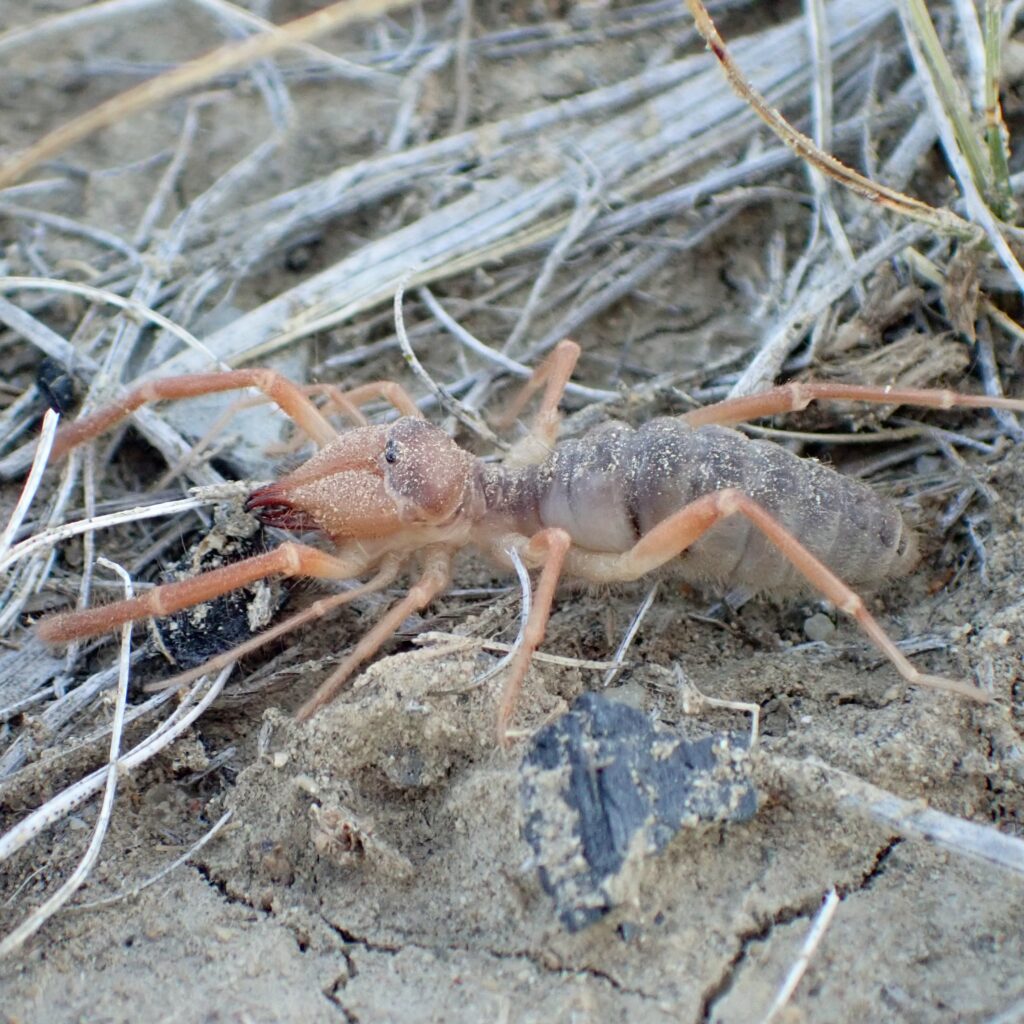
Sun Spider
Eremobates sp.
This crazy looking creature is a member of Order Solifugae, which also includes camel spiders and wind scorpions (although they are neither spiders nor scorpions). Fast-moving, and with one of the largest jaw-to-body size ratios in the animal kingdom, they have developed a fearsome reputation – but with no fangs and no venom, they pose little threat to humans. Check out our Notes from the Lab post about Solifugids to learn more about these fascinating arachnids!
Nate Kohler, July 18, 2025, Beaverhead County, MT
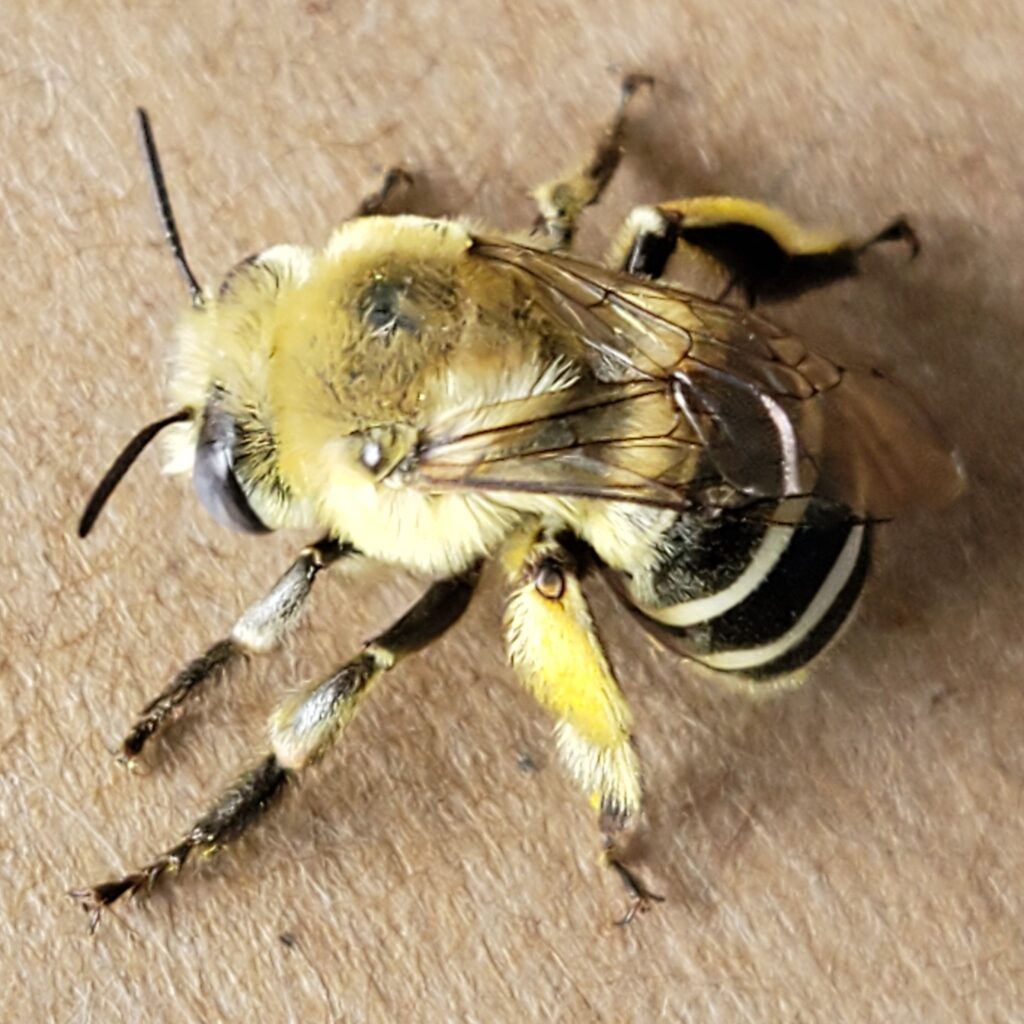
Digger Bee
Anthophora sp.
With over 450 species worldwide in the genus Anthophora, it may not be possible to identify this striking bee to species from a photo. All Anthophorid species are solitary, and thus do not have the backing of a colony to help forage or defend from predators, although some will nest together in aggregations. As their name suggests, nearly all species nest in the soil, either in flat ground or on embankments. Larvae develop in waterproof cells rather than spinning cocoons.
Sal Culotta, July 19, 2025, St. Ignatius, MT

Great Spangled Fritillary
Argynnis cybele
Fritillaries can be very tough to ID, but this one is easier than most. The upper wings of males are bright orange with black spotting, similar to many other fritillary species; females, however, are black and buffy cream colored, looking unlike any other species found nearby. They also have a wide cream cream-colored band on the underside of the hindwing. See more photos here. This large butterfly flies throughout much of North America in open areas, woodland edges, moist fields, and prairies. Caterpillars feed on leaves of violets (Viola spp.)
July 26, 2025, Ronan, MT
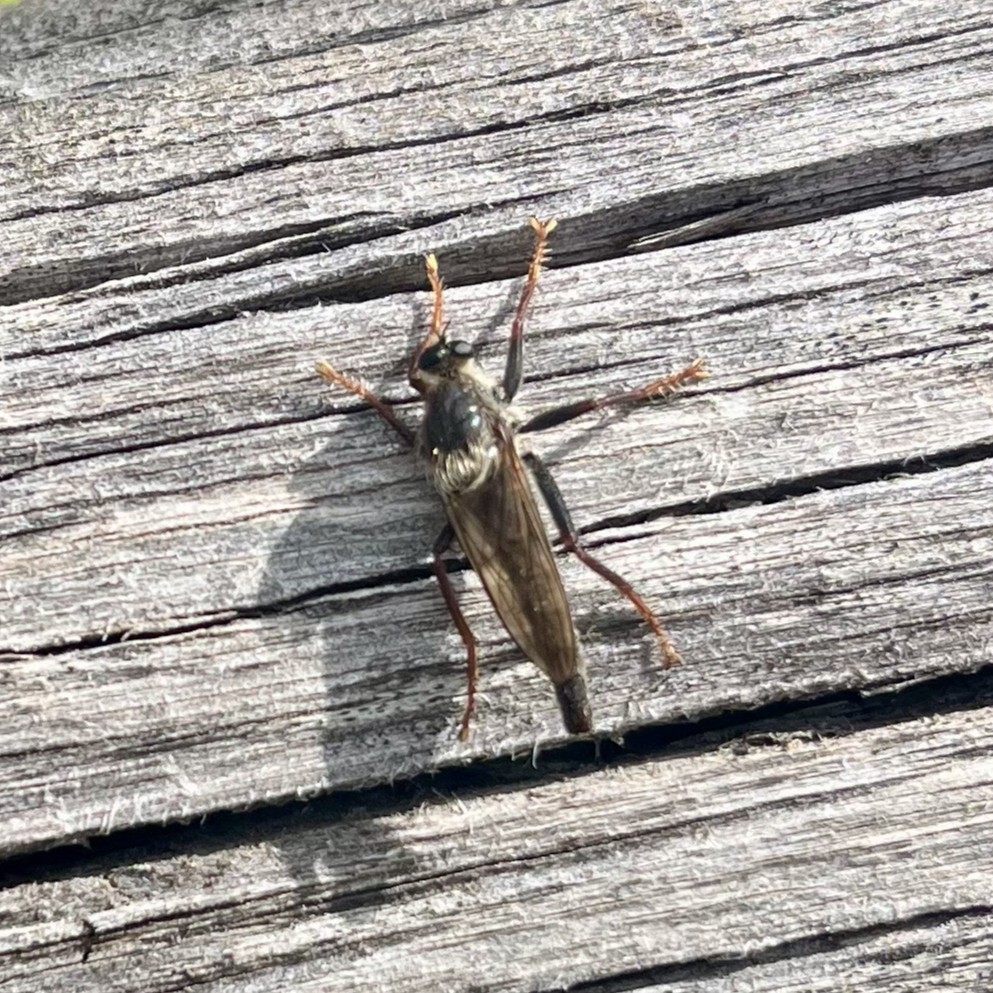
Robber Fly
Stenopogon inquinatus
Robber flies (also called “assassin flies”) are speedy ambush predators that prey on other insects, usually snatching them mid-flight. They are commonly found in open, dry, sunny areas; their larvae develop in soil or rotting wood and are voracious predators themselves. Although there are ~7,500 described species worldwide, this group of flies is not well-studied. Despite their predatory nature, they do not bite humans, unlike the better-known (and widely hated) horseflies.
Kamal Fox, July 25, 2025, Blodgett Canyon, Hamilton, MT
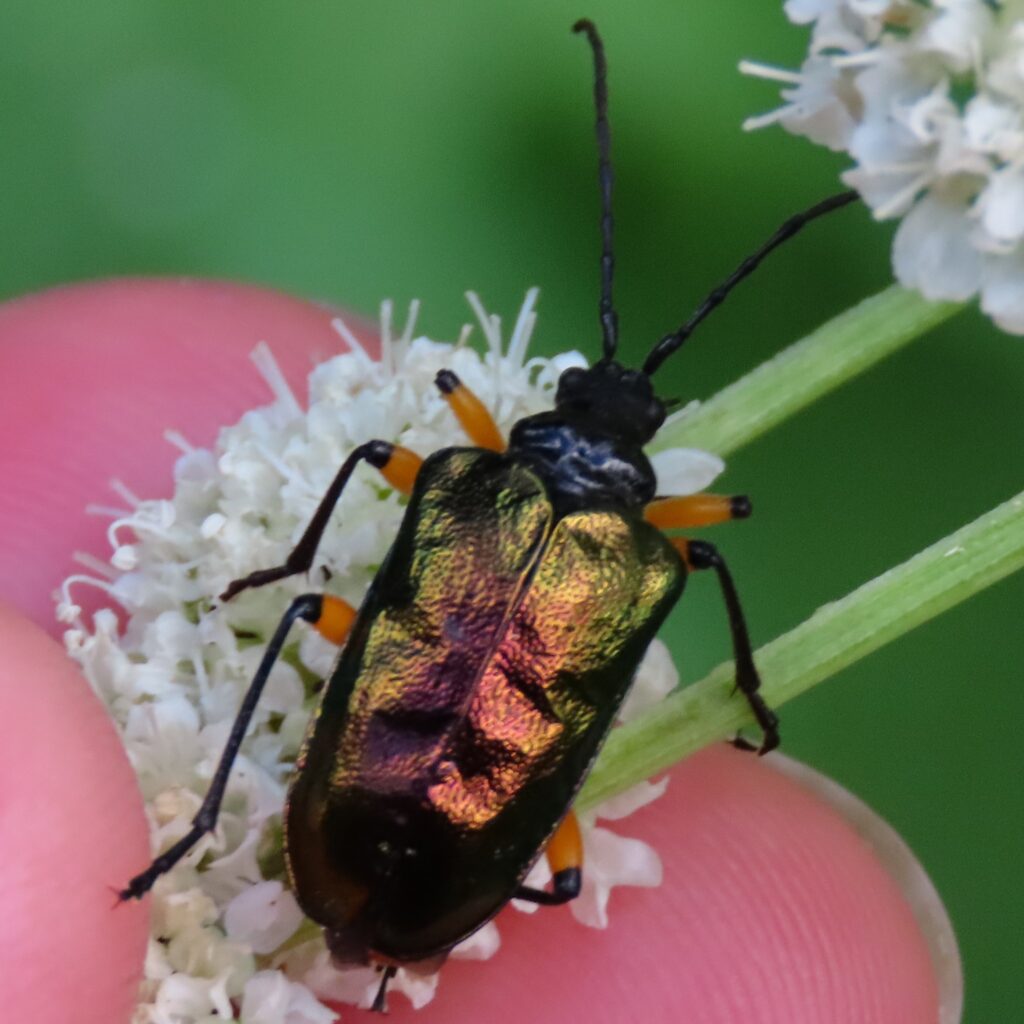
Metallic Fir Borer
Pseudogaurotina cressoni
This beetle species is so striking, it was used as the “cover model” on the front of the Pacific Northwest Insects book. The metallic wing covers and bright orange segments on the legs are unmistakable. These beetles are mostly active during the day and can be found in forested regions throughout the Pacific Northwest from May to September. Larvae develop in wood of true firs (Abies spp.) and Douglas Fir (Pseudotsuga menziesii). Adults visit many types of flowers to feed on pollen.
Kelly Dix, July 28, 2025, Superior, MT
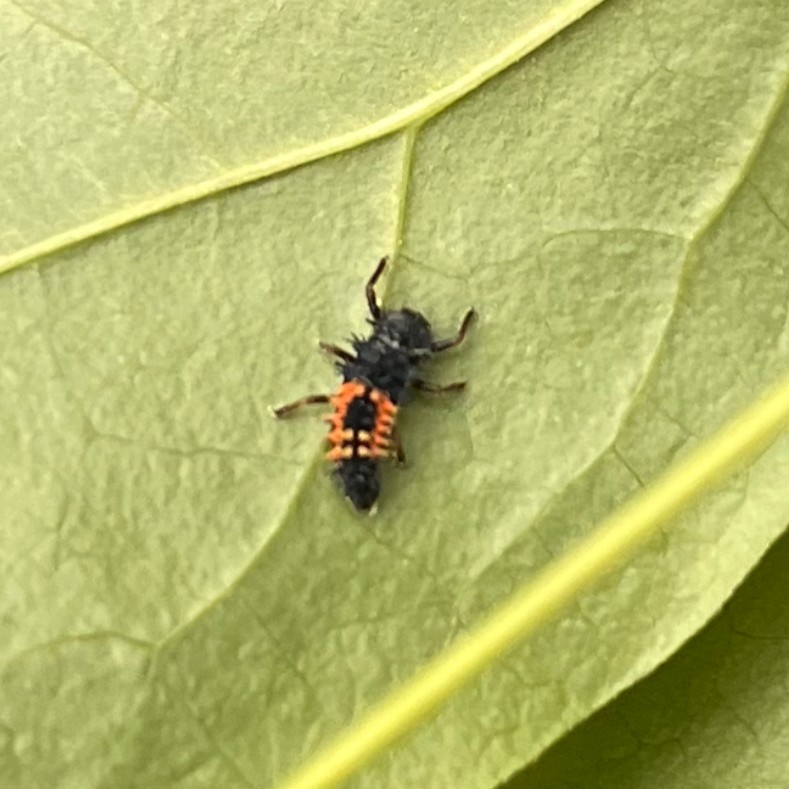
Asian Lady Beetle Larva
Harmonia axyridis
You could probably identify the adult form of this insect as a type of lady beetle, with its round shape, reddish-orange color, and dark spots. Like most insects that undergo complete metamorphosis, though, the larval stage looks very different from the adult. The Asian Lady Beetle was introduced to the U.S. in the early 1900s to help control aphids and is now well established throughout the country. Unfortunately, it is an aggressive species that can impact our native lady beetles. The alligator-like larva is a voracious eater of aphids, scale insects, and other soft-bodied invertebrates. Adults are also predators. The average time from egg to adult is about one month and there are multiple generations per year. Adults can live two to three years after emerging from the pupa.
Raelynn Roadhouse, July 26, 2025, Florence, MT
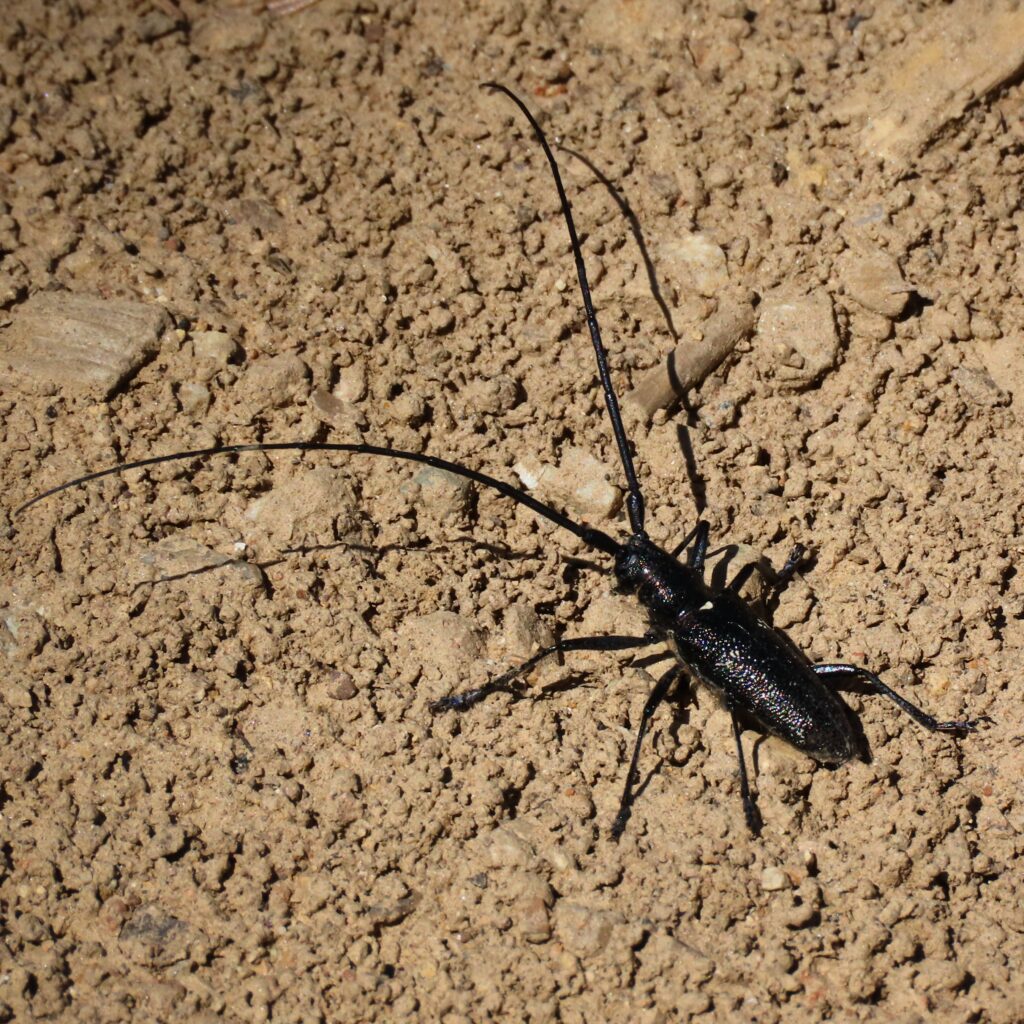
White-spotted Sawyer
Monochamus scutellatus
These conspicuous, chunky beetles are hard to miss with their large black bodies and ridiculously long antennae. The male’s antennae can reach up to twice their body length and help them efficiently track down a mate. They inhabit pine forests across North America; their slow-growing larvae (often taking two years to complete their lifecycle) eat their way through damaged pine, spruce, and fir trees, creating extensive, winding galleries. The adults are attracted to the scent of asphalt, as its chemical composition is similar to the compounds released by dead and dying coniferous trees.
Kelly Dix, July 28, 2025, Superior, MT
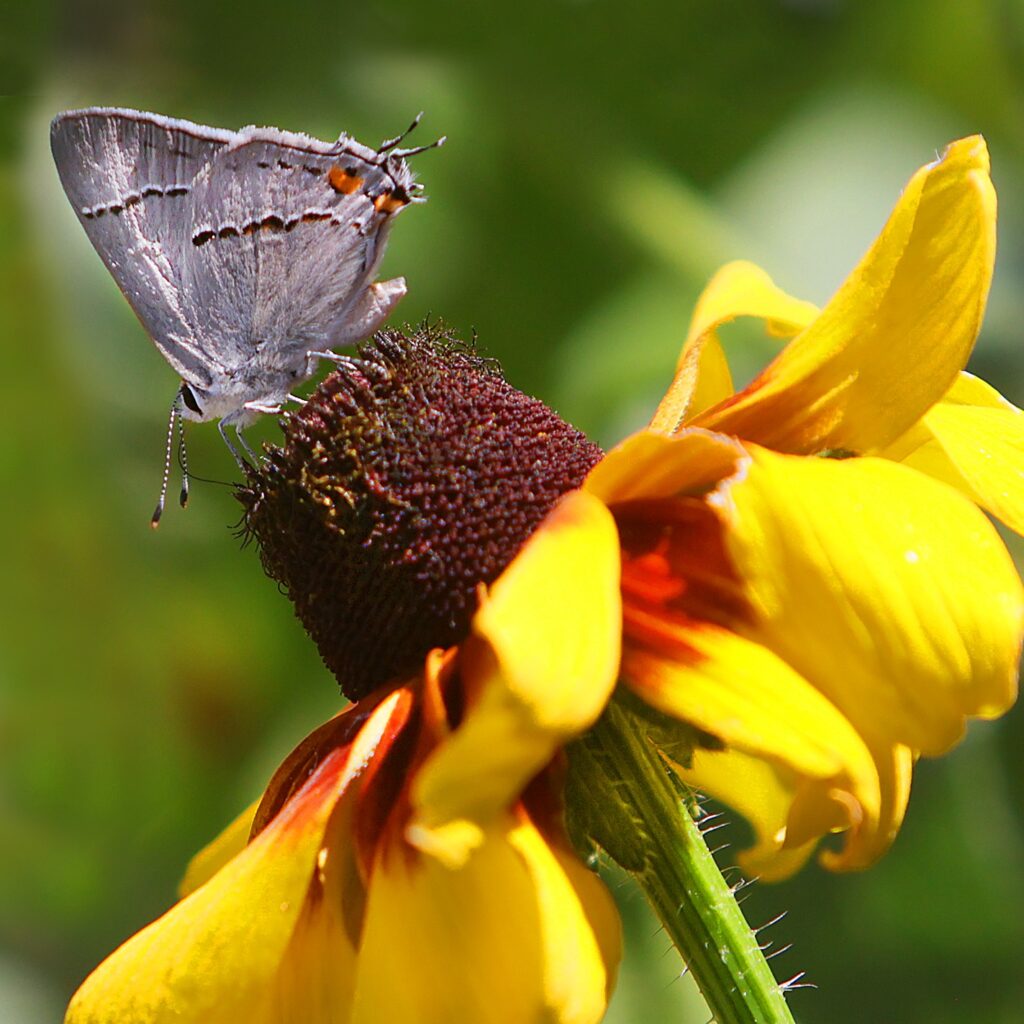
Gray Hairstreak
Strymon melinus
This relatively small butterfly (20-30 mm) is found across North and Central America in various habitats. It is truly cosmopolitan, ranging from cities to farmlands, tropical forests to mountains. It physically resembles the group of butterflies known as the blues but belongs to a separate subfamily, Theclinae. It is recognized by the orange and blue spots near the delicate tail-like extensions on its hind wings.
Ed Moreth, July 29, 2025, Plains, MT
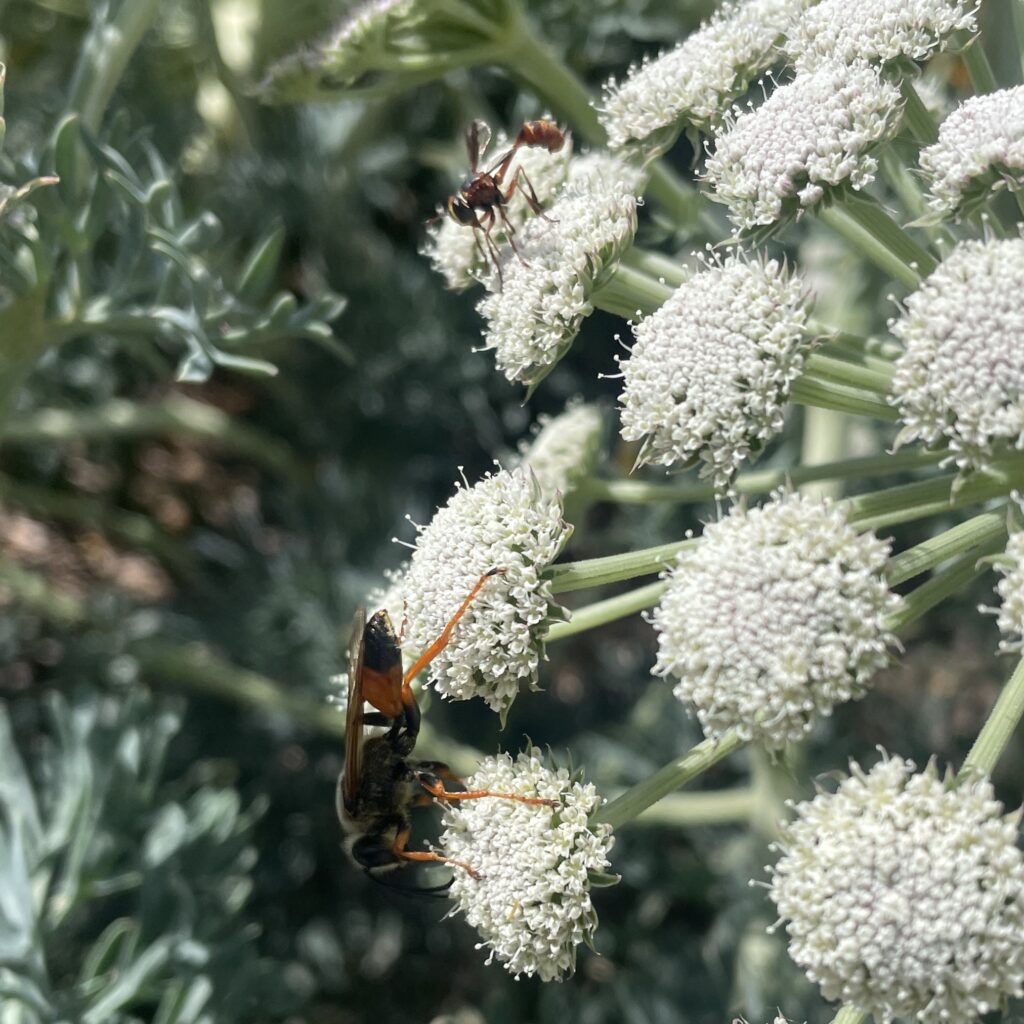
Great Golden Digger Wasp + Thick-headed Fly
Sphex ichneumoneus + Physocephala sp.
How many wasps do you see in this photo? You would be forgiven for guessing two, but you would be incorrect. The upper insect is actually a Thick-headed Fly, a parasite of bees. Its coloration and body shape closely resembles that of wasps, and individuals have even been observed waving their forelegs above their heads, presumably to mimic the movements of hymenopteran antennae. Members of the Physocephala genus can be found worldwide, wherever their larval hosts are found. Read more about these wasp-mimics and their fascinating (but gruesome) reproductive cycle here. The only true wasp in this picture is the lower one, a Great Golden Digger Wasp. Named for the yellowish fuzz on its head and thorax, and averaging almost an inch long with a bright half-black, half-orange abdomen, these solitary wasps are hard to miss. They, too, parasitize other insects, in this case, crickets or grasshoppers. These wasps range from southern Canada throughout the United States and into Central and South America in moist habitats with wide open, sandy areas.
Carolyn Taber, July 30, 2025, Rocky Mountain Gardens, Missoula, MT
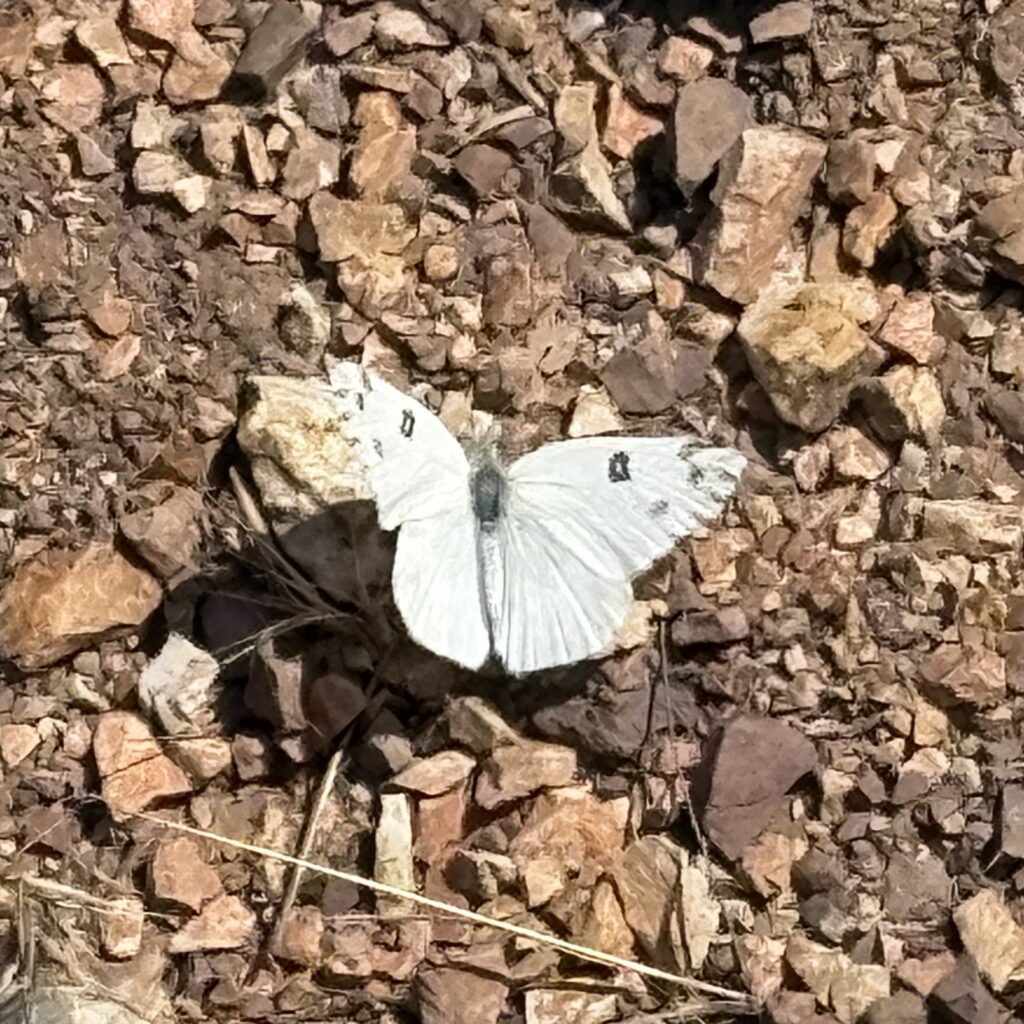
Checkered or Becker’s White
Pontia sp.
Without a ventral (underside) view of this butterfly, we were unable to determine if this is a Becker’s White (Pontia beckerii) or a Checkered White (Pontia protodice). Both can be found in this general area at this time of year, in open habitats in the western United States and southern Canada and are often associated with plants in the mustard family. We typically see two broods of these Pontia species each year, and adults take wing throughout spring, summer, and early fall (though they are most abundant in early spring).
Rachel Johnson, July 24, 2025, Waterworks Hills, Missoula, MT